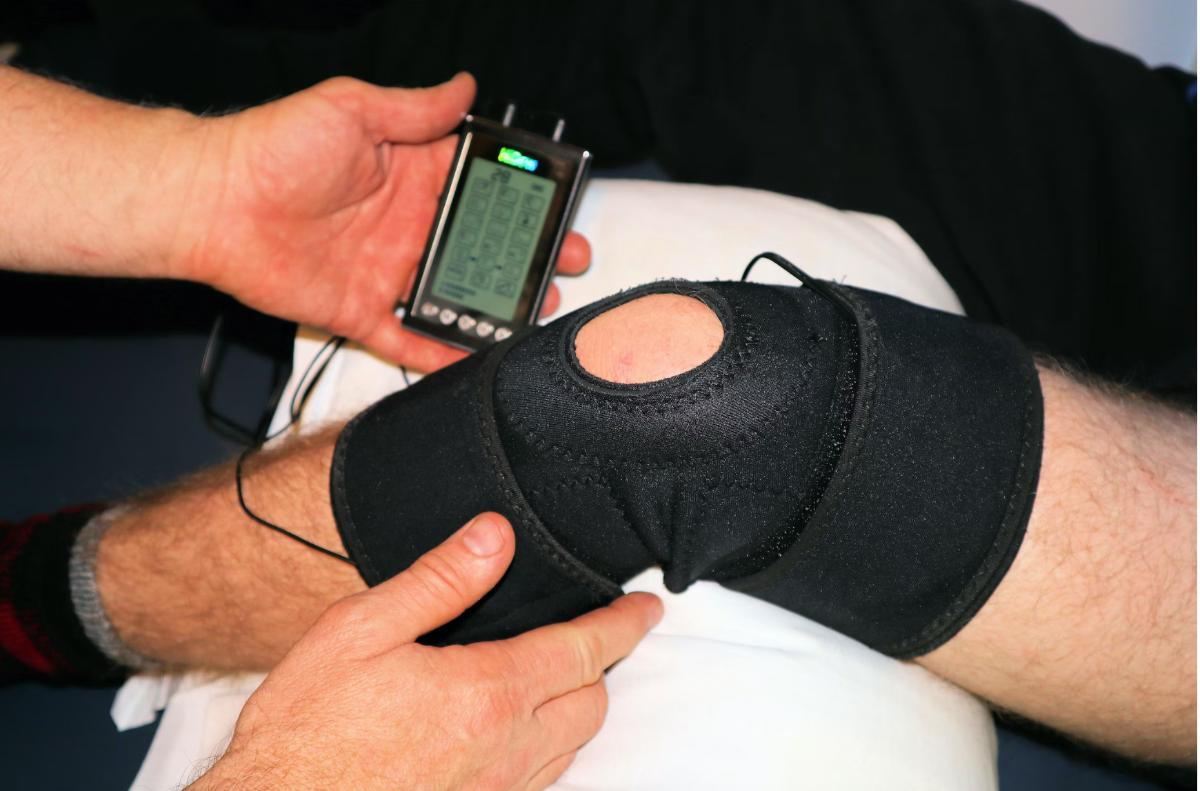
Having access to pain management techniques at home is a great way to keep chronic pain at bay. A transcutaneous electrical nerve stimulation unit, AKA a TENS unit, is a powerful tool that is utilized in Chiropractic offices for pain relief that can also be used at home for your own pain management routine. In this guide, we'll walk you through the steps of effectively using a TENS at home for pain management, along with safety tips and suggested protocols for different types of pain. As always, this is a reminder that the information you find in this blog is not medical advice, and you should always be sure to consult with a medical professional before incorporating any pain management treatment into your healthcare.
What is a TENS Unit?
A TENS unit is a little device that is wired to electrodes connected to the skin that sends gentle electrical impulses to the skin and to your nerves. These impulses block the body's nerve pathways that indicate pain and help to stimulate endorphins, which are the feel-good chemicals in your brain.
Step 1: Selecting the Right Device
Before you jump into buying the first TENS unit you see, it's important to know how to choose the best one. Take into consideration the following things:
Portable units specifically designed for home
Variety of modes that you can choose from.
Adjustable settings for intensity, frequency, and duration
Although most have this, the range might change between devices.
Amount of channels and connections can be used
Most leads or wires that extend from the device will split into two connections for electrodes. Some devices have a port for only one lead, whereas others have a port for 2. If you want to be able to place more electrodes on a muscle group or want to be able to provide relief to two different areas, you’ll want one with 2 ports.
Size and weight of the unit
Battery operated vs. rechargeable
Step 2: Keep Safety a Priority
Consult Your Chiropractor: Always consult your chiropractor or healthcare professional before using a TENS unit at home. They can provide guidance on the appropriate settings, usage for your specific condition, and disclose any risks or contraindications you should be aware of if any.
Follow Instructions: Carefully read and follow the device's user manual for proper usage. Improper use can lead to discomfort or skin irritation.
Avoid Sensitive Areas: Do not use TENS near the eyes, on the neck, on the spine, over the chest, on the head, or on areas with open wounds or broken skin.
Step 3: Using the Device
Prepping the Area: Before attaching the electrodes, make sure the area of your skin is clean and dry to ensure optimal adhesion and effectiveness. If there is a lot of hair in the area, you may need to use a razor to shave the area for improved connectivity.
Applying the Electrodes: Once you have the area cleaned and prepped, place the electrodes on the skin surrounding the area of pain. They should be at least 1 inch apart. Most devices come with adhesive pads. You can follow the manufacturer's instructions for proper electrode placement or consult with your chiropractor to determine the best placement based on your personal needs.
Using the Device: Once connected, start with the lowest intensity setting and gradually increase until you feel a comfortable tingling sensation. The goal is to feel a mild, non-painful contraction of the muscles.
Step 4: Recommended Frequency and Protocols
Since every person has a different tolerance, different goals, and different affected areas and levels of pain, the frequency and protocols can also vary. I know we say this a lot but a trusted chiropractor can help you develop a good treatment plan to best help your body. However, there are some basic guidelines you can also follow:
Back Pain:
Frequency: 2-3 times per week
Protocol: Start with a low intensity setting and gradually increase. Focus on the muscles surrounding the painful area.
Muscle Tension:
Frequency: Daily
Protocol: Start with a low intensity setting and gradually increase. Move the electrodes along the tense muscle groups for a soothing effect.
Joint Discomfort:
Frequency: 2-3 times per week
Protocol: Place electrodes on the muscles around the affected joint. Begin with a low intensity and adjust as needed.
As for length of time, Professionals usually suggest sessions last up to 30 minutes at a time but be sure to ask your healthcare provider or chiropractor for recommended length of time, and always give your skin a break from the electrode pads every 20 minutes or so to prevent irritation.
Step 5: Listening to Your Body
Pay attention to how your body responds to the TENS unit. If you experience any discomfort, irritation, or unexpected pain, stop the session and consult your healthcare professional. Electrical stimulation should always be a comfortable and positive experience.
